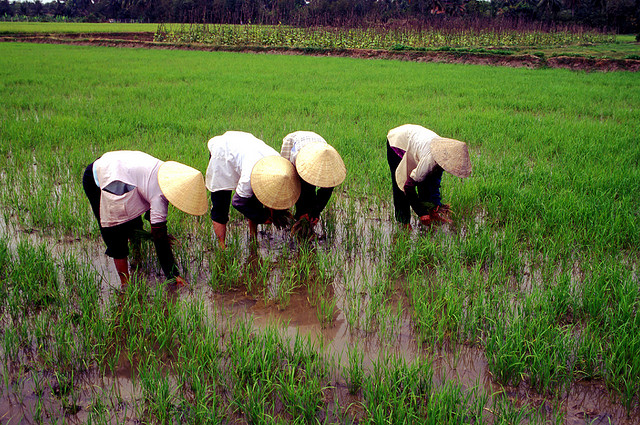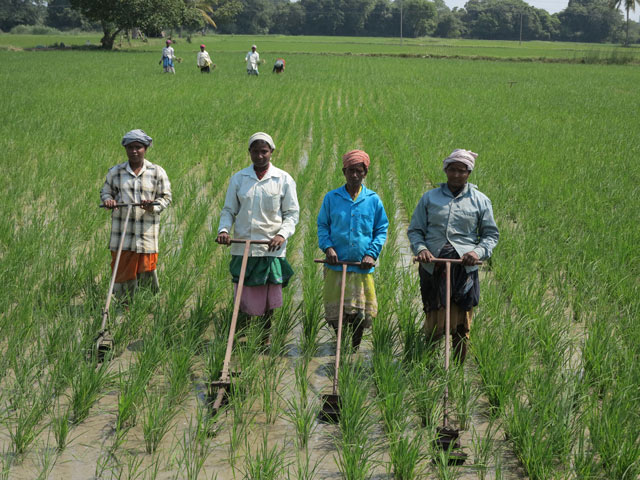Manual and mechanical weeding
Direct control of weeds can be done through (1) manual weeding by hand and (2) mechanical weeding using implements such as push weeder and interrow cultivation weeders.
Manual
 Manual weeding by hand is an efficient method for weed control. However, this is labor intensive and is not practical for large areas.
Manual weeding by hand is an efficient method for weed control. However, this is labor intensive and is not practical for large areas.
Implements: Hoes, sickles
When to hand weed
- When weeding annual weeds and certain perennial weeds that usually do not regenerate from underground parts
- When removing weeds within rows and hills where a cultivating implement, such as a push weeder, cannot be used
Handweeding of young weeds at the two-leaf to three-leaf growth stages is extremely difficult. To effectively hand weed:
1. Delay weeding for at least 2 weeks or until weeds are large enough
to be grasped easily.
2. Ensure that there enough soil moisture for easy pull.
3. Remove the weeds from the field to stop them from regenerating.
Mechanical
 Mechanical weeding is most appropriate for crops transplanted in straight rows. This method requires less time and labor costs to than manual weeding.
Mechanical weeding is most appropriate for crops transplanted in straight rows. This method requires less time and labor costs to than manual weeding.
Implement: Rotary or push weeder
- Ensure that there is enough soil moisture before weeding. It could be difficult to use a weeder when the soil is too dry.
- Pass the weeder in between rows. This buries the weeds and cuts the root system so weeds die before they can re-establish. Improper use of weeders can damage the rice.
Mechanical weeding may be less effective than hand weeding because weeds within the crop rows are not removed. Competition of rice crops from weeds that survive can be harmful.